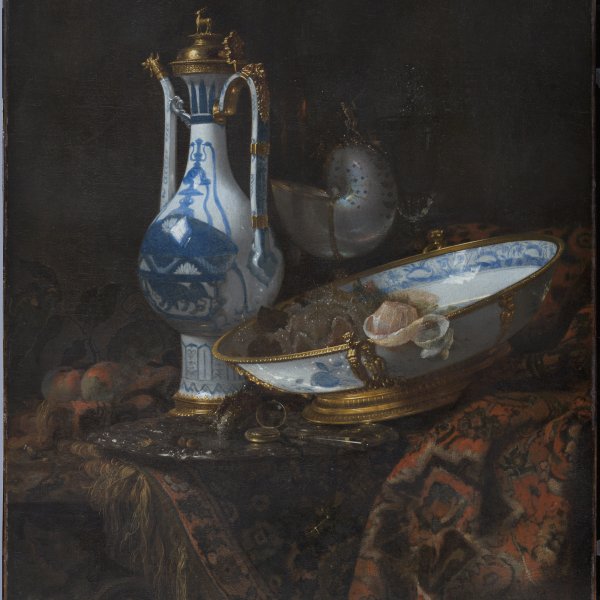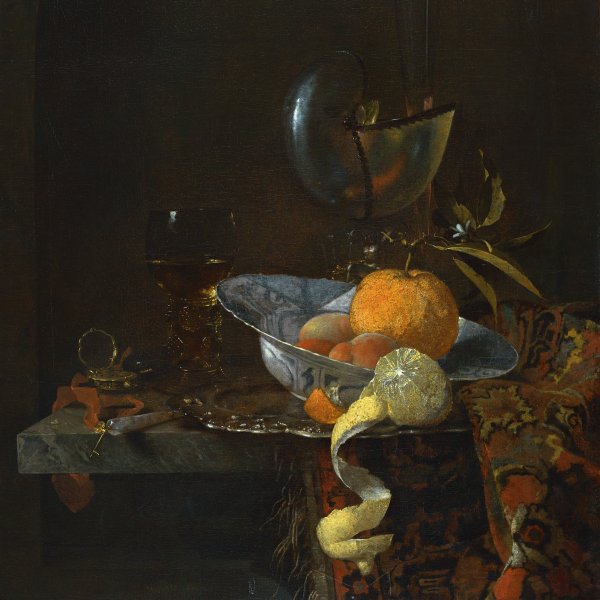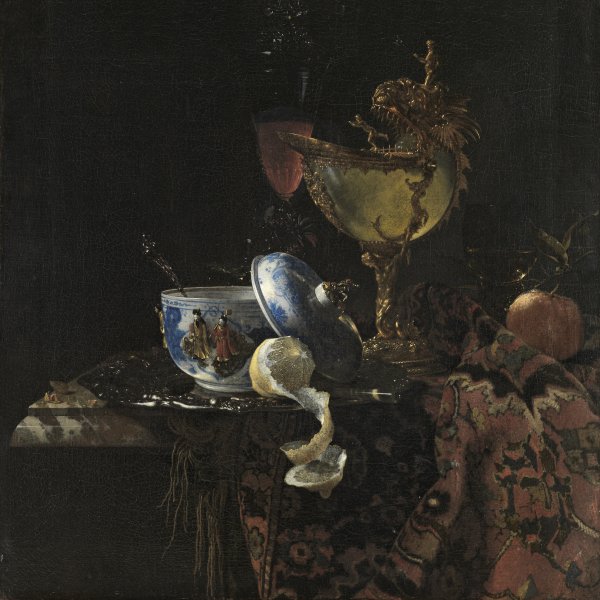Willem Kalf
Rotterdam, 1619-Amsterdam, 1693
Kalf was an artist celebrated during his own lifetime and one of the most important of all the Dutch still-life painters. Arnold Houbraken was the first writer on art to provide information on the artist and his career. Son of a prosperous textile merchant who also occupied prominent municipal positions, Kalf was baptised in 1619 in the church of Saint Lawrence in Rotterdam. Little is known of his training and the suggestion that he studied in the studio of Hendrik Pot should be ruled out. It is, however, possible that his master was François Rykhals. In 1642 the artist is documented in Paris in Saint- Germain-des-Prés and during his time in France, Kalf painted rich, complex still lifes on a large scale that have been compared to the work of Adriaen van Utrecht and his teacher Rykhals. He also painted simple kitchen scenes of small dimensions. Kalf returned to Rotterdam in 1646 and soon afterwards moved to Hoorn where in 1651 he married Cornelia Pluvier van Vollenhove, a distinguished printmaker, calligrapher and poet, with whom he had four children. In 1653 Kalf was living in Amsterdam, where he remained for the rest of his life and where his still lifes underwent a stylistic modification. They now include fewer but carefully selected, exquisite objects that stand out on a tabletop against a dark background. Arranged upright or lying on their sides, these objects are illuminated to create a mysterious effect, and Kalf achieved remarkable effects of reflection and refraction on their surfaces, which he studied in an almost scientific manner. During this period he began to produce compositions in series, which became a typical feature of his work and in which he reorganised and changed elements within the same overall single design, producing different interpretations of the same theme. His last still lifes include shells, while his brushstroke became richer and more precise. From 1663 Kalf executed less works and his last painting dates from 1680. According to Houbraken, the artist devoted his last years to art dealing and valuation. Kalf died in Amsterdam in 1693. His principal followers were Willem van Aelst, Juriaen van Streeck, Christiaen van Striep and Barend van der Meer.







